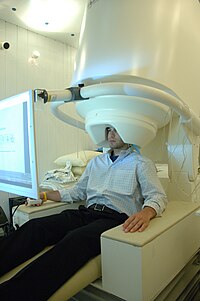
Photo from wikipedia
Alzheimer’s disease (AD) is the most common cause of dementia in the elderly. The sporadic late onset form of the disease is a multifactorial complex disorder influenced by genetic and… Click to show full abstract
Alzheimer’s disease (AD) is the most common cause of dementia in the elderly. The sporadic late onset form of the disease is a multifactorial complex disorder influenced by genetic and environmental factors. Evidence about the involvement of copper deregulation in AD is overwhelming, encompassing in vitro, experimental models (ref. 1 additional material), clinical, neurophysiological, genetic and meta-analyses studies. An overview of the most relevant findings with a focus on the plasticity phenomena as revealed by magnetoencephalography/electroencephalography (MEG/EEG) studies in living individuals is provided herein. Brain copper homeostasis
Journal Title: Aging Clinical and Experimental Research
Year Published: 2019
Link to full text (if available)
Share on Social Media: Sign Up to like & get
recommendations!